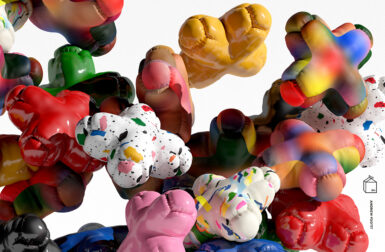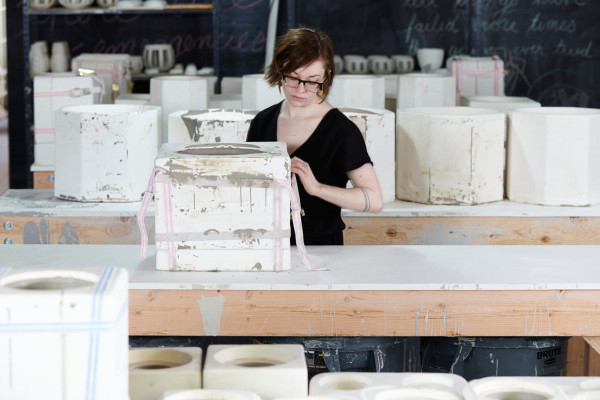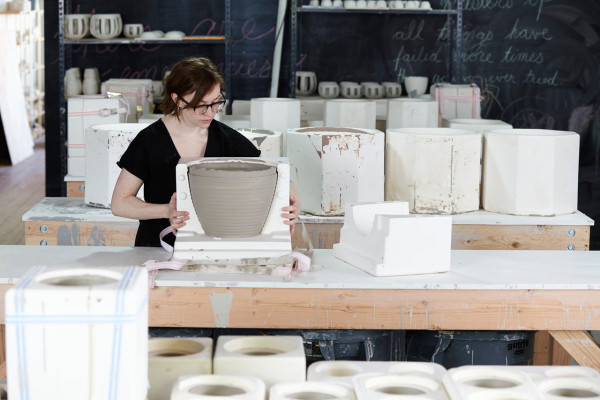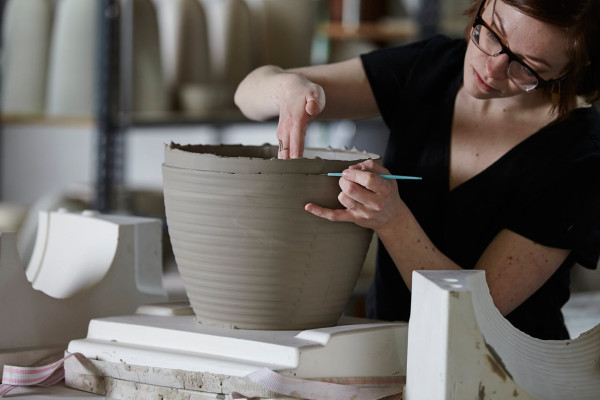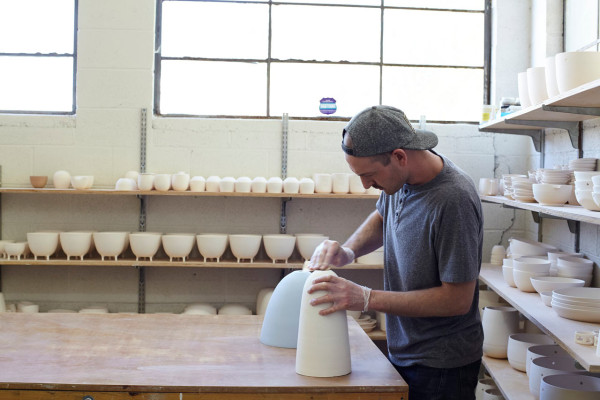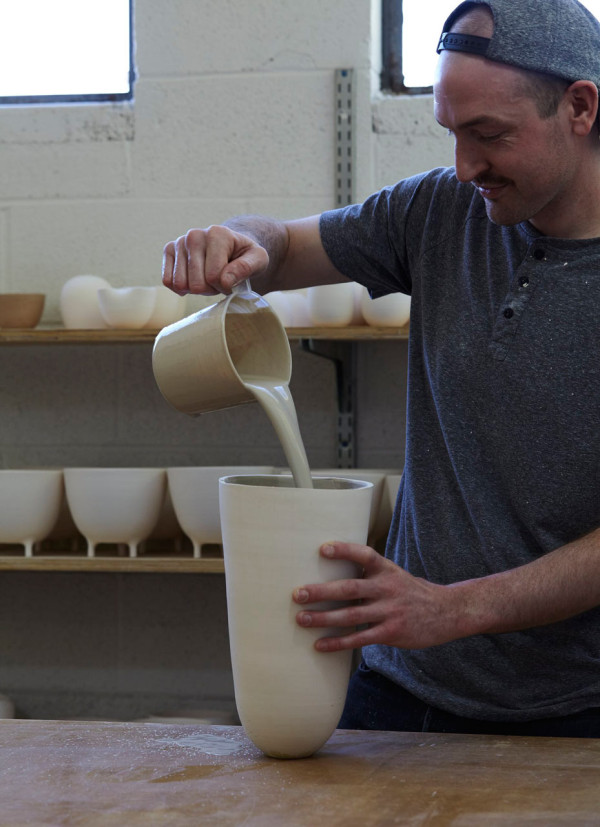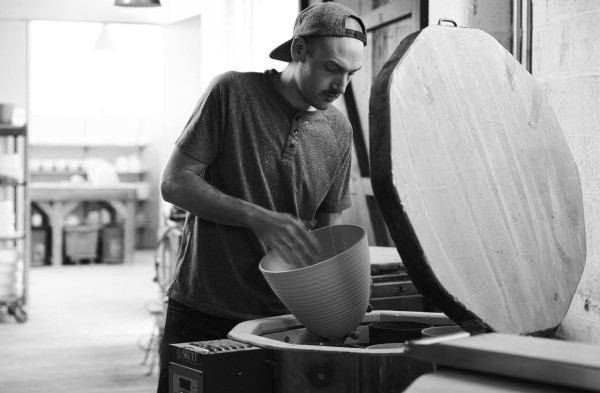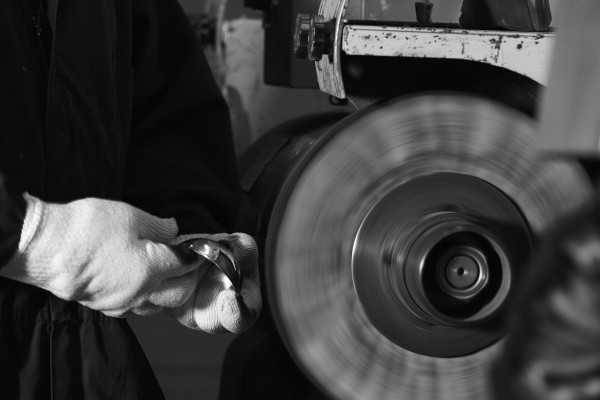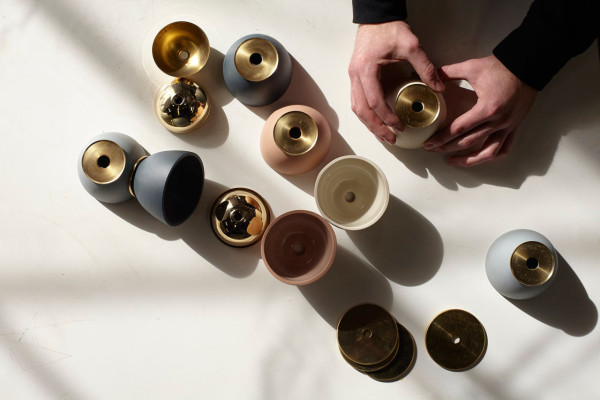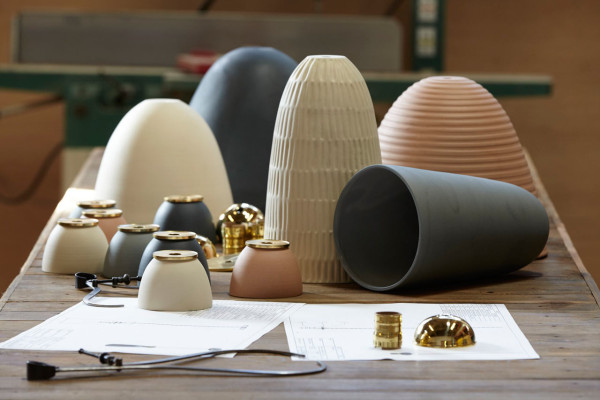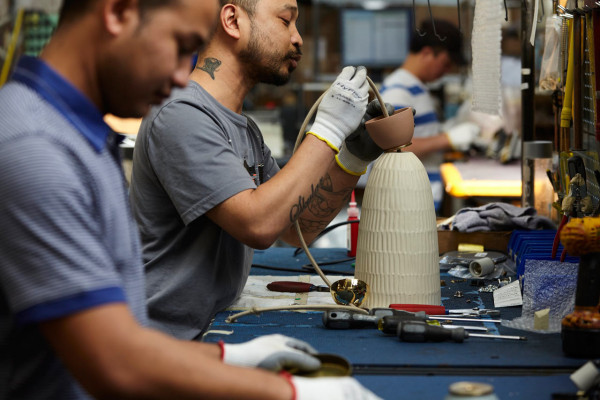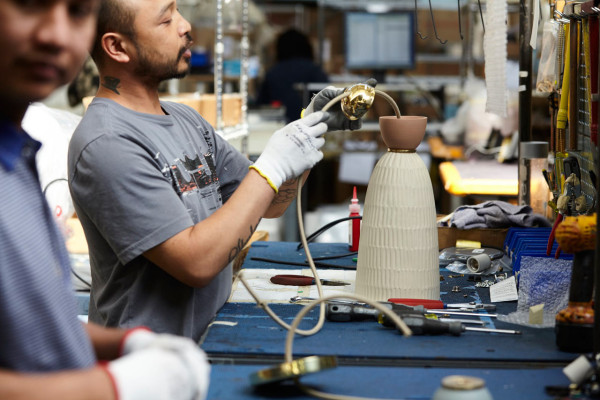Pigeon Toe has been one of our favorite makers for years now and the Portland, Oregon-based ceramic studio has been branching out with their offerings in recent times. One of their latest products is a collection of customizable ceramic pendants for Rejuvenation called Hazel. Each of the six forms began as a hand-thrown shape that was used to make the molds. As you’ll see in this month’s Deconstruction, the Hazel pendants are handmade and finished off with brass hardware after the components have been selected. Take a look at the extensive process they go through to make each pendant.
Tinted stoneware slip is hand-mixed and then poured into a plaster mold (6 gallons!).
After soaking for a half hour, slip is poured out, leaving a shell of clay behind that forms the walls of the shade.
After drying for 12-24 hours, straps are removed to disassemble the mold.
Plaster mold parts are removed, revealing a shade in its raw form.
Using a scalpel, the “spare” is removed, making an even + level opening. Then we pull it out of the mold, cut a hole in the bottom for suspension, and put it on the shelf to dry until “bone-dry.”
Seam lines from the mold are burnished and sponged before loading the shade into it’s first firing.
After unloading from the bisque (the first firing, which reaches 1940 degrees), shades are inspected for surface defects and flaws, and sanded smooth on their unglazed exterior.
Hand-pouring glaze into the interior of a shade.
Shades are loaded into the kilns for their final glaze fire (to 2167 degree F).
Inspecting finished pieces for defects and flaws during kiln unload.
Time to pack up on a pallet and send off to Rejuvenation for assembly!
Polishing brass parts in Rejuvenation’s Portland, OR factory.
Securing a brass ring onto a ceramic cap.
The team inspects the parts against drawings to ensure that each part is made to plan.
Pendants are customizable by length. To start the assembly process, we cut the cord according to customer specifications.
Assembly – wire the socket, connect to solid brass body and suspend the ceramic parts that have been chosen by customer. With multiple colors and textures, the light can be configured in many different ways.
Final installation!

